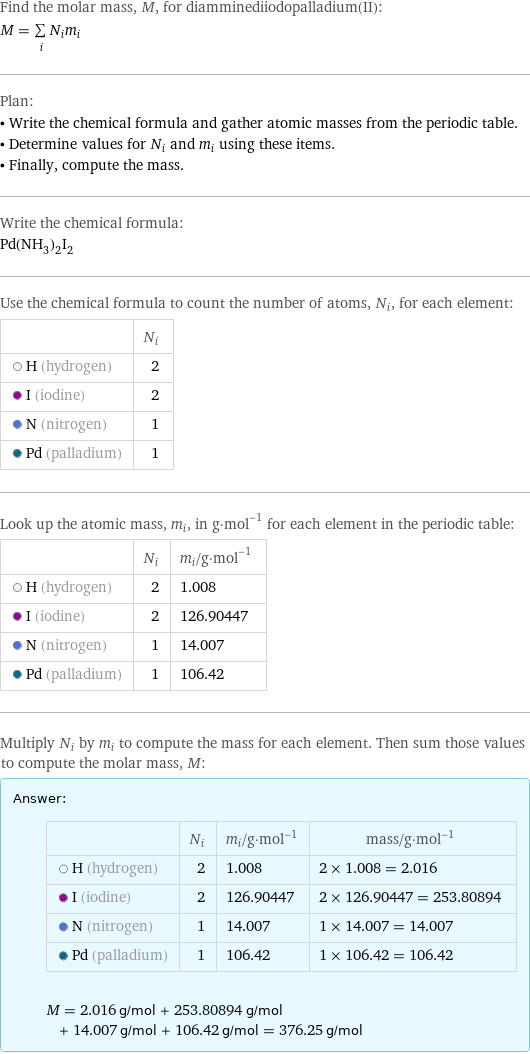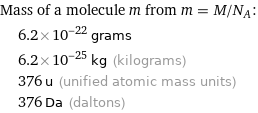Input interpretation

diamminediiodopalladium(II) | molar mass
Result

Find the molar mass, M, for diamminediiodopalladium(II): M = sum _iN_im_i Plan: • Write the chemical formula and gather atomic masses from the periodic table. • Determine values for N_i and m_i using these items. • Finally, compute the mass. Write the chemical formula: Pd(NH_3)_2I_2 Use the chemical formula to count the number of atoms, N_i, for each element: | N_i H (hydrogen) | 2 I (iodine) | 2 N (nitrogen) | 1 Pd (palladium) | 1 Look up the atomic mass, m_i, in g·mol^(-1) for each element in the periodic table: | N_i | m_i/g·mol^(-1) H (hydrogen) | 2 | 1.008 I (iodine) | 2 | 126.90447 N (nitrogen) | 1 | 14.007 Pd (palladium) | 1 | 106.42 Multiply N_i by m_i to compute the mass for each element. Then sum those values to compute the molar mass, M: Answer: | | | N_i | m_i/g·mol^(-1) | mass/g·mol^(-1) H (hydrogen) | 2 | 1.008 | 2 × 1.008 = 2.016 I (iodine) | 2 | 126.90447 | 2 × 126.90447 = 253.80894 N (nitrogen) | 1 | 14.007 | 1 × 14.007 = 14.007 Pd (palladium) | 1 | 106.42 | 1 × 106.42 = 106.42 M = 2.016 g/mol + 253.80894 g/mol + 14.007 g/mol + 106.42 g/mol = 376.25 g/mol
Unit conversion

0.37625 kg/mol (kilograms per mole)
Comparisons

≈ 0.52 × molar mass of fullerene ( ≈ 721 g/mol )

≈ 1.9 × molar mass of caffeine ( ≈ 194 g/mol )

≈ 6.4 × molar mass of sodium chloride ( ≈ 58 g/mol )
Corresponding quantities

Mass of a molecule m from m = M/N_A: | 6.2×10^-22 grams | 6.2×10^-25 kg (kilograms) | 376 u (unified atomic mass units) | 376 Da (daltons)

Relative molecular mass M_r from M_r = M_u/M: | 376